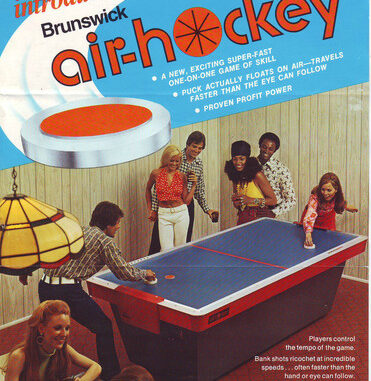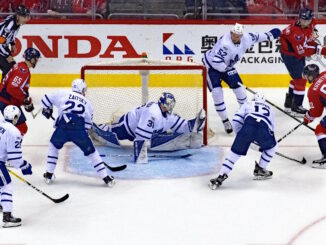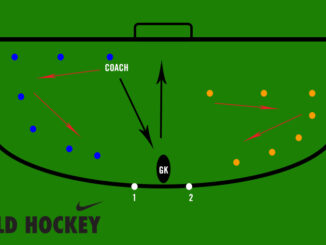
The air hockey table game you know and love today was invented in 1969 by a group of Brunswick engineers of Brunswick Billiards. It was initially drafted for commercial release, but set aside. Many years after the development of the initial concept, the engineers designed the first air hockey game, including mallets and disks.
The game was originally played on a table, utilizing a disk and squared mallets. The game is now played utilizing round mallets. The table is meant to be a table that provides a smooth surface that generates zero friction. Generally, the game surface is dotted with hundreds of tiny holes, through which a steady supply of gentle air is pumped. The puck then glides on a cushion of air just above the table’s surface. Some surfaces are merely smooth surfaces without holes, and the air is generated by a battery-operated air hockey game puck that generates its own cushion of air. It should be noted that these are not regulation or approved for use in any United States Air Hockey Association-approved events, games or tournaments.
The air hockey game rose to popularity in the 1970’s, as an arcade toy sensation, a college dorm rec room staple and as an amateur sport with tournament play. Tournament play began in the early 1980’s in Houston, Texas with the formation of the first professional league, The Houston Air Hockey Association. After the establishment of the Houston group, a state-wide Texas Air Hockey Players Association formed and developed formal rules and regulations for the game, qualifying it more as a sport. USAA-approved tables will be suited for two player games only, though four-player game tables do exist for novice and recreational use.
Present day rules for the sport are now determined by the USAA, and include the following rules:
1) At the start of the game, a coin toss or face off determines the player that will start the game with first possession of the puck in play.
2) The first player that scores seven points wins the game.
3) Once the puck crosses into a player’s zone of the table by crossing the center line, that player has up to 7 seconds to return the puck to the opposing player’s zone, or else has committed a foul.
4) Other fouls include holding down the puck with one’s mallet, touching a puck with any part of a player’s body or the puck leaving the table entirely.
Competitive play and tournaments are still played on an international level today, with professional tournaments being played throughout Europe and the United States. The USAA is the only known governing body over the sport, in any country or continent, and therefore, the USAA rules apply to any tournaments played worldwide. Despite this level of success, the air hockey game is still considered to be a recreational non-sport amongst most players, who affiliate it with arcades and bar-play. It is still seen in many recreational venues and arcades, but is often over-shadowed by the presence of video gaming systems.
Unless otherwise stated, PONIREVO and/or its licensors DO NOT own any intellectual property rights in the website and material on the website. Majority of the site’s content has been scraped and auto posted by a third party artificial intelligence program —– PONIREVO Creation Team.
Proudly WWW.PONIREVO.COM



